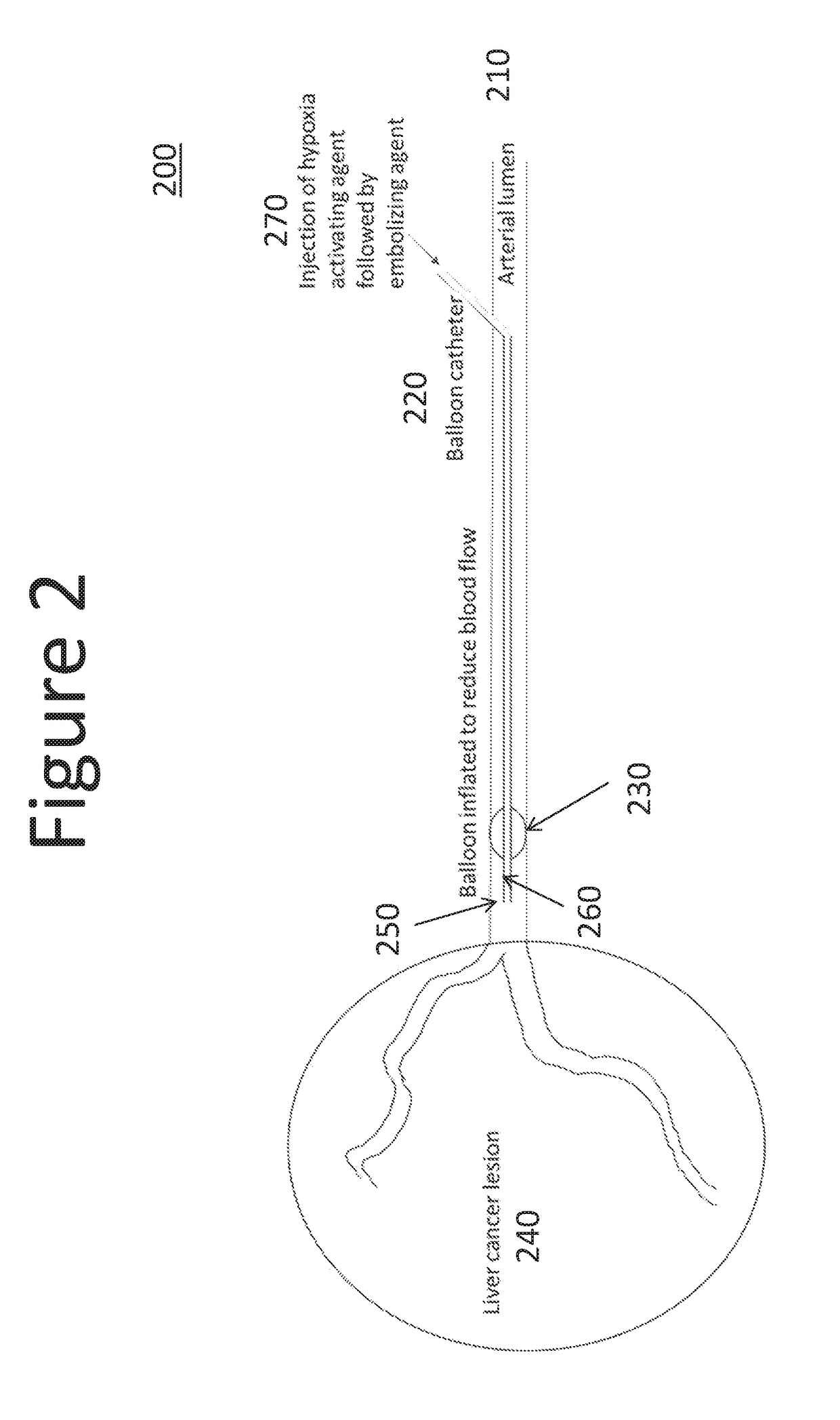Methods for treating liver tissue
a liver tissue and treatment method technology, applied in the field of liver tissue treatment methods, can solve the problems of liver cancer treatment that non-targeted therapies such as conventional chemotherapy and radiation therapy, and is not particularly effective, and achieves the effects of improving the survival rate of liver cancer patients, reducing the risk of ionizing radiation, and improving the survival ra
- Summary
- Abstract
- Description
- Claims
- Application Information
AI Technical Summary
Benefits of technology
Problems solved by technology
Method used
Image
Examples
example
[0091]According to the following example, local infusion of a hypoxia-activated bioreductive agent when hepatic arterial pressure is reduced and subsequent embolization will cause liver tumor necrosis. A 4-French angiocatheter will cannulate the major branch of the hepatic artery that supplies a targeted liver cancer lesion. A balloon microcatheter (3-French or smaller) will then be inserted through the 4-French angiocatheter already in place. The small microcatheter will then be cannulated into the arterial branch that supplies the targeted lesion. An arteriogram will be performed to ensure that the position of the tip of microcatheter in the right position for subsequent injection of hypoxia-activating agent followed by Lipiodol. Once it is verified that the balloon catheter is appropriately positioned, the balloon will be inflated to stop or slow down blood flow thereby reducing the pressure of the artery beyond the tip of balloon. Hypoxia-activated bioreductive agent tirapazamin...
PUM
| Property | Measurement | Unit |
|---|---|---|
| diameter | aaaaa | aaaaa |
| diameter | aaaaa | aaaaa |
| time | aaaaa | aaaaa |
Abstract
Description
Claims
Application Information
 Login to View More
Login to View More - R&D
- Intellectual Property
- Life Sciences
- Materials
- Tech Scout
- Unparalleled Data Quality
- Higher Quality Content
- 60% Fewer Hallucinations
Browse by: Latest US Patents, China's latest patents, Technical Efficacy Thesaurus, Application Domain, Technology Topic, Popular Technical Reports.
© 2025 PatSnap. All rights reserved.Legal|Privacy policy|Modern Slavery Act Transparency Statement|Sitemap|About US| Contact US: help@patsnap.com


